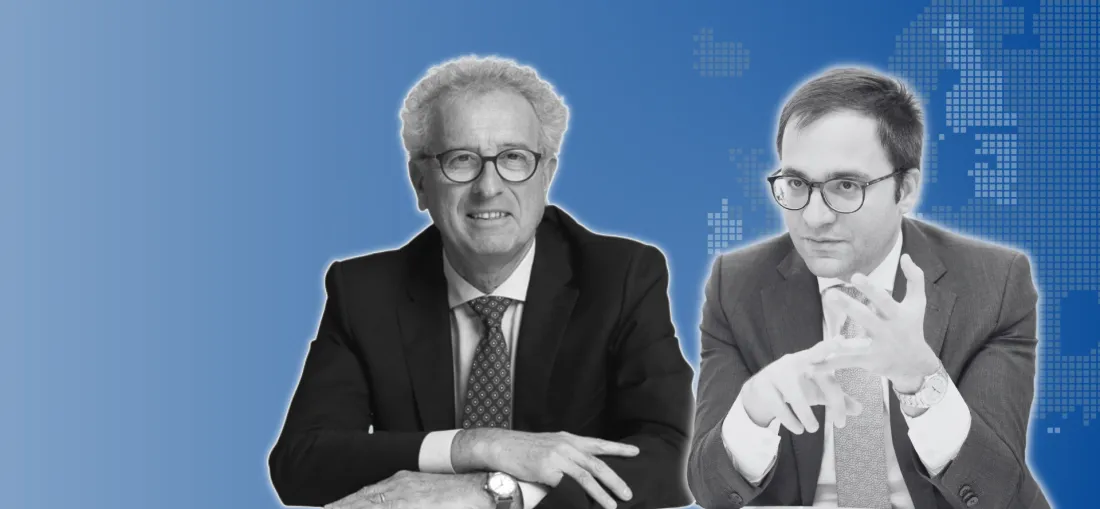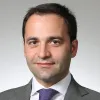Pierre Gramegna and Kalin Anev Janse in interview with Börsen-Zeitung

Interview with ESM Managing Director Pierre Gramegna and ESM CFO Kalin Anev Janse
Published in Börsen-Zeitung, 1 July 2023
Interviewer: Kai Johannsen
Original language: English
Börsen-Zeitung: From the perspective of ESM/EFSF, how do you define transition and transition finance to a greener and sustainable world?
Pierre Gramegna: Transition can generally be understood as the shift of economic activities or entities towards climate neutrality and sustainability. There does not yet seem to be a consensus on the definition of transition finance, but the OECD’s 2021 review of transition finance-related approaches gives an indication about the general understanding of it. According to this definition, it refers to the financing of activities or entities that seek to undertake such transitions and have the following characteristics: they are high-carbon emitting, may currently not have access to more sustainable alternatives, and are pivotal for future socio-economic development. Hence, transition finance is key to supporting a timely and orderly transition to more sustainable economies. Green finance, instead, only focuses on environmentally sustainable economic activities. Transition and green finance are independent from each other, but are closely interlinked as both are needed for a successful transition.
What do you see as the biggest challenges on this path?
Pierre Gramegna: European Union (EU) countries are required by law to cut greenhouse gas emissions by at least 55% by 2030 and to achieve climate neutrality by 2050. This represents a form of solidarity; that is, solidarity with future generations. Undoubtedly, the implementation of this commitment is complex and brings with it a lot of challenges. But it is there, and it is enshrined in legislation.
However, when looking at the global level, I think the risk of insufficient ambition and complacency pose substantive challenges. The Paris Agreement goal is to limit global warming to 2°C above pre-industrial levels and, preferably, to 1.5°C. According to the latest Intergovernmental Panel on Climate Change report, the global surface temperature over the period 2010–2020 has been 1.1°C above pre-industrial levels. The World Meteorological Organisation recently estimated the probability of exceeding the 1.5°C threshold for at least one year between now and 2027 at 66%. Since 2015, when it was almost zero, the likelihood to temporarily exceed 1.5°C has steadily increased.
The United Nations’ (UN) 2022 Emissions Gap Report highlighted that there is currently no credible pathway in place to reach the 1.5°C. Under current policies, global temperatures are estimated to increase by 2.8°C by the end of this century. This is clearly off track. The risks of crossing tipping points at some stage, with large and likely irreversible damage to our planet and humankind, are increasing.
How are you addressing these challenges, and what is your time horizon for doing so?
Kalin Anev Janse: One of the ESM’s strategic priorities is integrating ESG and climate change considerations in all our activities. Given the horizon of the climate change challenge, we expect to uphold this strategic priority for the years to come.
An important lever is our investment portfolio. The ESM has a paid-in capital of over €80 billion, the highest of any international organisation. Our investments are mainly in bonds. Soon after it was created, the ESM began investing part of its capital in green bonds. Over time, it enlarged its scope to social and sustainability bonds.
In 2020, the ESM signed the UN-backed Principles for Responsible Investment (UN PRI). Since then, it has concentrated on implementing an issuer-based ESG scoring approach for its paid-in capital investments. In 2022, the ESM also selected an ESG data and rating provider. To define its own responsible investment approach, the ESM examines the ESG impact of each issuer’s overall activity, by using externally sourced ESG rating scores.
Which challenges or problems might not be solved in the short term or only with great difficulty?
Pierre Gramegna: The financing gap is a major problem. While financing needs amount to trillions of euros every year until 2050, only a fraction is available today.
Carbon pricing is an essential factor in this regard. The International Monetary Fund (IMF) estimated that to limit global warming, the average price of carbon needs to rise to an average of USD75 per ton by 2030. According to the IMF, the global average price was around USD6 per ton in 2022. Coverage also needs to broaden. Only 30% of emissions were covered by carbon taxes and emission trading schemes in 2022. But the public sector cannot do it all. Private finance needs to come in more, which requires creating the right incentives. Also, the public and private sectors need to work hand in hand.
Another major challenge is the need for countries to act globally – there is only one atmosphere. Imagine the world is composed of two countries. If country A delivers its share, and country B doesn’t, country A’s efforts ultimately remain pointless. It’s the free rider problem.
What do you see as the greatest opportunities in this transition process?
Kalin Anev Janse: Climate mitigation and adaptation efforts generate opportunities. They are the flipside of risks. The recommendations of the Task Force on Climate-related Financial Disclosures published in June 2017 list a range of such opportunities. Investing in the green transition will help Europe’s climate resilience and open up new innovation pathways. The transition is an opportunity to develop new green technologies, products, services, and markets. For example, if consumer preferences shift away from investing in polluting companies, there is an opportunity to develop products that are more sustainable. This can create a virtuous circle.
What are the greatest risks?
Pierre Gramegna: Ultimately, the greatest risk is inaction or insufficient action. How does that materialise?
First, there are physical risks. These are risks pertaining to extreme climate change-related weather events. They are materialising in front of us, like storms, floods, heatwaves, and wildfires. According to the World Meteorological Organisation, human and material costs related to climate disasters have increased substantively over the period 1970–2021. Over that period, two million people have died, and economic losses have amounted to USD4.3 trillion. Recorded economic losses have increased dramatically over the last decade.
The less is done today, the more efforts will be needed in the future. The NGFS presented several climate scenarios exploring the impacts of climate change and climate policy. If we stick to current policies, we will land in a “hothouse world” scenario. Under such a scenario, physical risks will continue to increase with irreversible damage.
In the long term, the risk is to leave future generations with an unliveable planet.
Which assets/financial instruments do you think will benefit most from the transition process?
Kalin Anev Janse: The simple answer is all assets/financial instruments that are credible, those that will have the most impact in supporting the transition. Against this backdrop, more comprehensive regulation and increased scrutiny are playing an important role.
I see an industry change. Sustainable bonds were growing rapidly until 2021 and then bounced back a bit in 2022 due to the fast repricing of bond yields and volatility in credit spreads. Asset managers and investors more often take a holistic ESG approach rather than a pure green bond approach. The ESM buys use-of -proceed bonds, which include all bonds that earmark raised funds for specific projects, either social, green, or a mix of the two (known as sustainability bonds). They have an important role to play in the transition. But the ESM pushed it to the next level. Our issuers are scored on ESG criteria. When we meet issuers, we don’t only discuss their – often limited – green bond programme. We want to understand if and how the entire entity moves into the right direction. These are the types of discussions we will be having more in the future.
Which assets/financial instruments will not benefit and become so-called stranded assets?
Kalin Anev Janse: The most vulnerable assets/financial instruments are those linked to industries and companies that will not contribute to the transition or those that claim they do but don’t. Credible and detailed disclosures and stress-testing is very important in sending signals in this respect. Such transparency will help investors in their decision-making. It will help them assess the implications against investment time-horizons and the risks of assets becoming stranded. The EU is making a lot of progress, evidenced by the ongoing efforts in reporting standards and requirements.
The risk attached to stranded assets should also be mainstreamed into ratings. We see a positive move in this regard. All major rating agencies now have a section in their rating reports about the ESG risks of an institution. But the link with the final credit rating still needs further development. Overall, risk departments are still more focused on credit risk scores versus ESG ratings. This needs to change. Studies have shown that ratings across rating agencies are very highly correlated for “traditional” credit risk. But when it comes to ESG ratings, correlations are quite weak across rating agencies. This requires investors to familiarise themselves with different methodologies, which is very time-consuming.
What new forms of financing instruments do we need to realise the transition process?
Kalin Anev Janse: In general, I think cooperation and synergies between the private and the public sectors will be key in ramping up finance.
What is your greatest wish regarding the transition to a greener and sustainable world?
Pierre Gramegna: Obviously, my greatest wish is that we, collectively, succeed in keeping climate change in check. And I hope this will still unfold in an orderly way. We are in an internal combustion engine car that is racing towards a wall. A very small minority does not believe the wall is there in the first place. A majority is convinced it is, but some think the wall is so far away that we do not need to step on the brakes now. Or some argue the speed at which we move towards the wall is slower than estimated. But time is of the essence. Science is there to alert us. As time passes, it becomes more difficult to bring the car to a halt. And once the wall is in sight, it will be too late. But I remain optimistic that current generations will hit the brakes on time. We have no choice.
Kalin Anev Janse: In my Twitter handle I say, “Building a greener Europe my kids can feel proud of”. It is up to our generation to fix the problems from the past and build this greener and more sustainable world for the future. I have been proud of my parents’ generation to build the biggest peace building project in history: the European Union. My biggest wish is that my kids will say, one day, “yes Dad – your generation was able to avert a true climate crisis and build a sustainable world for our kids”. That would be my wish.
Authors


Contacts


